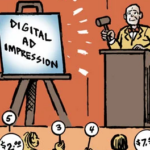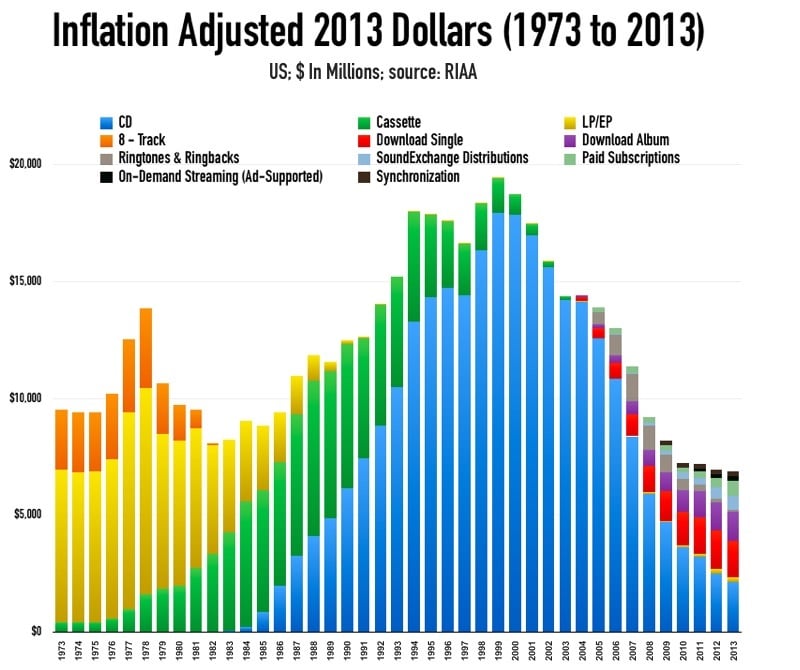 “Data-Driven Thinking” is written by members of the media community and contains fresh ideas on the digital revolution in media.
“Data-Driven Thinking” is written by members of the media community and contains fresh ideas on the digital revolution in media.
Today’s column is written by Reid Tatoris, co-founder of Are You A Human.
Lately, all anyone in ad tech is talking about is ad blocking, and for good reason.
Ad blocking is costing publishers millions of dollars and making it increasingly difficult for advertisers to reach their target audiences. Use of ad blocking has grown 41% (PDF) year over year, according to PageFair. Sixteen percent of US Internet users used an ad blocker last year, growing to 45 million users by late 2015. Globally, that number is 181 million. Clearly, there is a large and growing demand.
To date, much of the industry’s conversation has focused on how to stop ad blocking, which is the wrong approach. If any one ad blocker is thwarted, another will spring up in its place because the demand is simply too high.
The inevitable endless cat and mouse game that would ensue is not a solution to an admittedly grave problem. Instead, we should look to other industries to learn lessons about what we can do to change the hearts and minds of consumers.
A Brief History Of Music Streaming
The ad-blocking crisis may feel like our own unique disaster, but the same scenario played out in the music industry. When Napster, LimeWire, Kazaa and other tools emerged around 15 years ago, a seismic and irreversible shift began. People could now get their content for free.
Without the ability to monetize their work, how would artists be able to keep producing great content? This same question plagues the world of digital content. Without ads that help monetize sites, will we continue to have users creating online content?
The Recording Industry Association of America’s (RIAA) initial reaction was predictable: They sued everyone. The industry cracked down in harsh, sometimes absurd ways, including suing this 12-year-old girl in 2003 or this 19-year-old pancreatitis patient in 2008.
Between 2000 and 2008, the music industry spent an inordinate amount on legal challenges mounted against more than 20,000 individuals. In three years alone, from 2006 to 2008, the music industry spent $64 million in lawsuits.
What was the result of all of this time, money and effort? Well, the settlements brought in a mere $1.4 million. The RIAA stopped filing these suits in 2008, admitting that the legal costs offset any gains. From 2000 to 2008, music industry revenues fell by more than 50%. Couple that with the bad press resulting from a massive industry organization filing lawsuits against children, and the industry was left in a much worse place.
source: RIAA
But the music industry hasn’t crumbled (not hardly), so what changed? iTunes. Punishing consumers for downloading music did nothing to change behavior. Then Apple came along and realized that people want to download music, so much so that they’re willing to pay for it. So Apple made it possible. They made it frictionless, so that paying 99 cents for a song on iTunes was a better experience than locating it for free on a file-sharing site. Instead of punishing people for consuming music the way they wanted, they developed a way to easily facilitate it. They made it dead simple and then charged for it.
That was just a beginning. Today, Spotify has 20 million paying subscribers, people happy to pay a fee to seamlessly access the content that they want. Apple’s new streaming service has 15 million users, a clear sign that consumers are willing to pay for the content they value if the experience is good.
Applying The Music Industry’s Lessons To Advertising
So how does this apply to the ad industry? Rather than trying to prevent users from blocking ads, we should focus on resolving the issues that made them block ads in the first place.
The leading reason cited by 45% of respondents in a recent IAB ad-blocking survey is a fear of malware. That means many consumers are using ad blocking as virus protection.
Many cited displeasure with the advertising they’re seeing, which doesn’t surprise me because while there is good digital advertising out there, so many digital ads are annoying or intrusive.
Privacy concerns were also frequently referenced. Consumers don’t want to be tracked without recourse and are uncomfortable with how much of their personal information is being used for ad targeting.
Whether it’s downloading music or prohibition, we know that preventing people from doing something they really want to do will ultimately fail. So rather than wasting our time looking for a “solution” to ad blockers, we should look for a solution that addresses the root cause of our current problem.
Let’s make beautiful, relevant ads that people find interesting rather than annoying. Let’s make sure no ad ever takes away from the experience the consumer is trying to enjoy. That means no more flashing ads or pop-ups.
And frankly, we need to stop terrifying people with the amount of personal information we collect. If we earn some trust back, people might not mind advertisers communicating with them.
Ads Aren’t All Bad – And Consumers Know It
As much as people complain about digital ads, people don’t hate advertising in principle. Just look at the Super Bowl. Every year, huge numbers of people look forward to watching the commercials, with the best ads getting millions of YouTube views afterward. In 2015, Budweiser’s “Lost Dog” ad accumulated more than 21 million views within 24 hours of the Super Bowl.
People actually enjoy watching good ads for the same reasons they enjoy good content. The way to win the war on ad blocking isn’t through technical circumvention, it’s by addressing consumers’ understandable fears about viruses, malware and data collection head-on and focus on making beautiful, less intrusive ads.
Follow Reid Tatoris (@reidtatoris), Are You A Human (@areyouahuman) and AdExchanger (@adexchanger) on Twitter.













